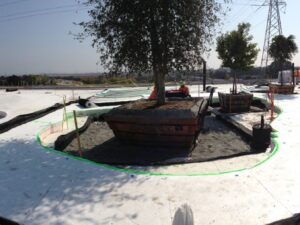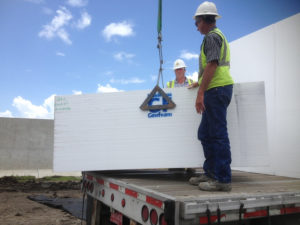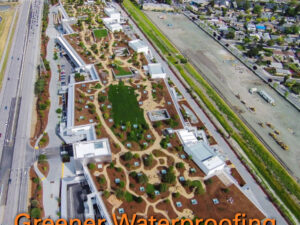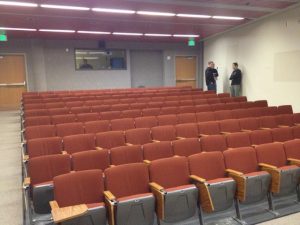Originally published online in Architectural Roofing & Waterproofing

Chicago’s Maggie Daley Park used EPS geofoam to reduce loads on a 3,700-car parking garage under the park
You likely would not be surprised to hear that Facebook this year installed a 9-acre garden roof on its new office building. But, more than just another perk for Bay Area tech hipsters like in-office nap pods and on-site dry cleaning, so-called green or vegetated roofs have been around for decades and are growing in popularity. In fact, the U.S. General Services Administration (GSA) maintains more than 2 million square-feet of green roofs, with their oldest one – on the Robert F. Kennedy Department of Justice building in Washington, D.C. – dating to 1935.
North of the border, Toronto was the first North American city to require vegetated roofs for new developments, having passed its Green Roof Bylaw in 2009.
Green roofs range from ones wth simple ground cover plants up to full-fledged park spaces with shrubs and trees. Two things most of them have in common is the need to reduce structural loads and keep water out of the building.
Benefits of Green Roofs
Building owners are increasingly interested in green roofs because of myriad benefits they offer. The GSA notes that “green roofs can help mitigate the problems that cities create by bringing the natural cooling, water treatment and air filtration properties that vegetated landscapes provide to the urban environment.” In short, green roofs help slow down urban run-off and filter-out rain-born and air pollutants. Additionally, green roofs provide better aesthetics and new amenity spaces for people and wildlife, according to the Green Roofs for Healthy Cities (GRHC) non-profit association.
Two Challenges of Green Roofs
A key challenge with designing and building a green roof is accounting for the increased dead loads (weight) imposed by the soil (or other growing medium), plants and other landscape finishes like planters, edgers, pathway materials, ect. With their numerous layers, the complex roofing assemblies required for green roofs also impose greater weight on the roof structure than do conventional assemblies. Such layers above the roof deck typically include the following, as summarized by Green Roofs for Healthy Cities:
- Vapor control
- Thermal insulation
- Support panel
- Waterproofing/root repellant layer
- Drainage layer
- Filter membrane
- Growing medium
- Vegetation
A second key challenge with implementing green roofs is ensuring a water-tight assembly, especially as the growing medium will retain moisture longer than a standard roof does.
Continue reading on Architectural Roofing & Waterproofing about addressing the challenges of weight and water and specific project examples with photos included.





